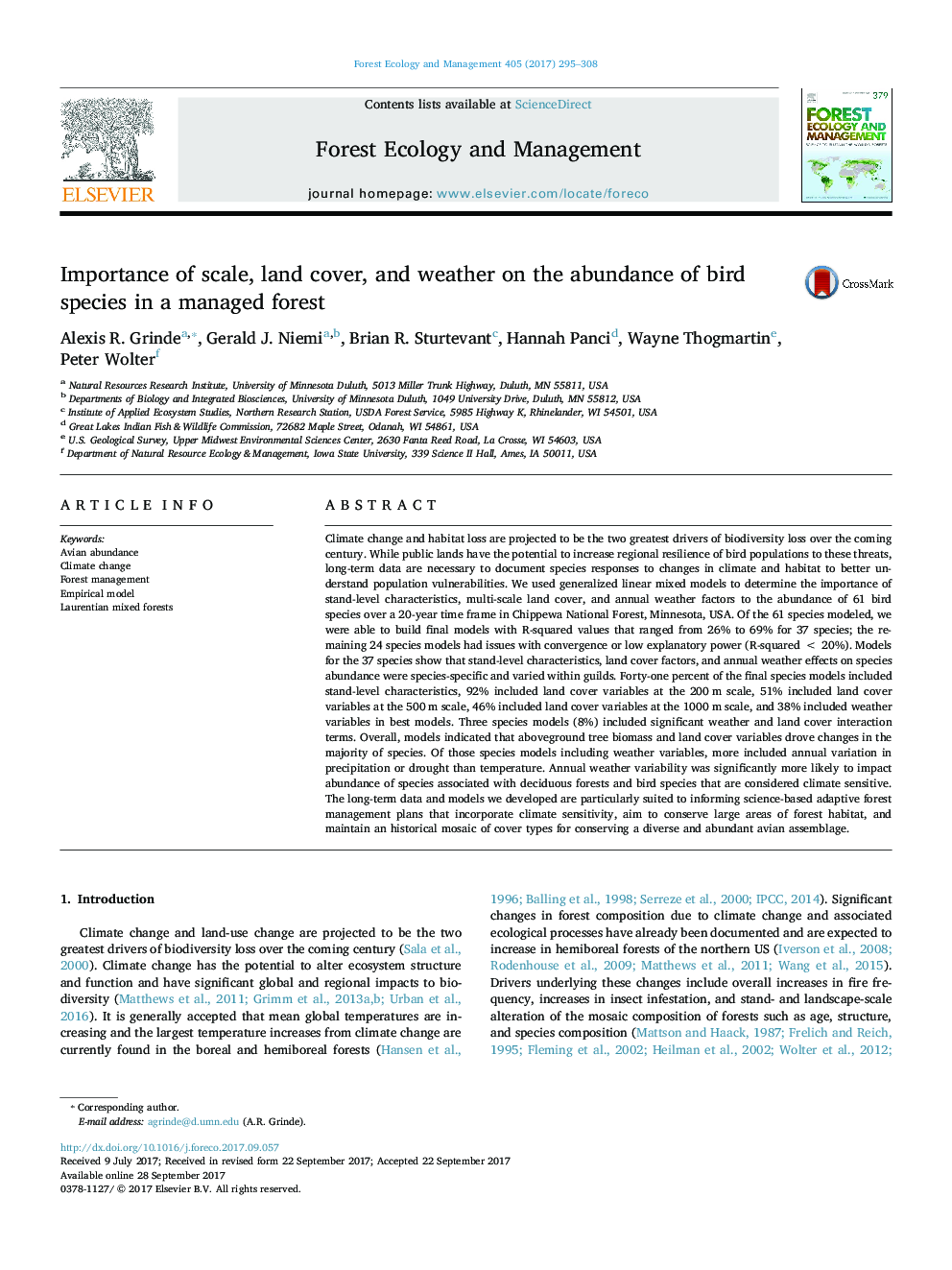| کد مقاله | کد نشریه | سال انتشار | مقاله انگلیسی | نسخه تمام متن |
|---|---|---|---|---|
| 6459097 | 1421353 | 2017 | 14 صفحه PDF | دانلود رایگان |
- Forest characteristics and climate effects on bird abundance are species specific.
- Biomass and land cover drove long-term changes in the majority of bird species.
- Climate had affected birds in deciduous forests and climate sensitive species.
- No single management scenario will benefit all bird species.
Climate change and habitat loss are projected to be the two greatest drivers of biodiversity loss over the coming century. While public lands have the potential to increase regional resilience of bird populations to these threats, long-term data are necessary to document species responses to changes in climate and habitat to better understand population vulnerabilities. We used generalized linear mixed models to determine the importance of stand-level characteristics, multi-scale land cover, and annual weather factors to the abundance of 61 bird species over a 20-year time frame in Chippewa National Forest, Minnesota, USA. Of the 61 species modeled, we were able to build final models with R-squared values that ranged from 26% to 69% for 37 species; the remaining 24 species models had issues with convergence or low explanatory power (R-squared < 20%). Models for the 37 species show that stand-level characteristics, land cover factors, and annual weather effects on species abundance were species-specific and varied within guilds. Forty-one percent of the final species models included stand-level characteristics, 92% included land cover variables at the 200 m scale, 51% included land cover variables at the 500 m scale, 46% included land cover variables at the 1000 m scale, and 38% included weather variables in best models. Three species models (8%) included significant weather and land cover interaction terms. Overall, models indicated that aboveground tree biomass and land cover variables drove changes in the majority of species. Of those species models including weather variables, more included annual variation in precipitation or drought than temperature. Annual weather variability was significantly more likely to impact abundance of species associated with deciduous forests and bird species that are considered climate sensitive. The long-term data and models we developed are particularly suited to informing science-based adaptive forest management plans that incorporate climate sensitivity, aim to conserve large areas of forest habitat, and maintain an historical mosaic of cover types for conserving a diverse and abundant avian assemblage.
Journal: Forest Ecology and Management - Volume 405, 1 December 2017, Pages 295-308
